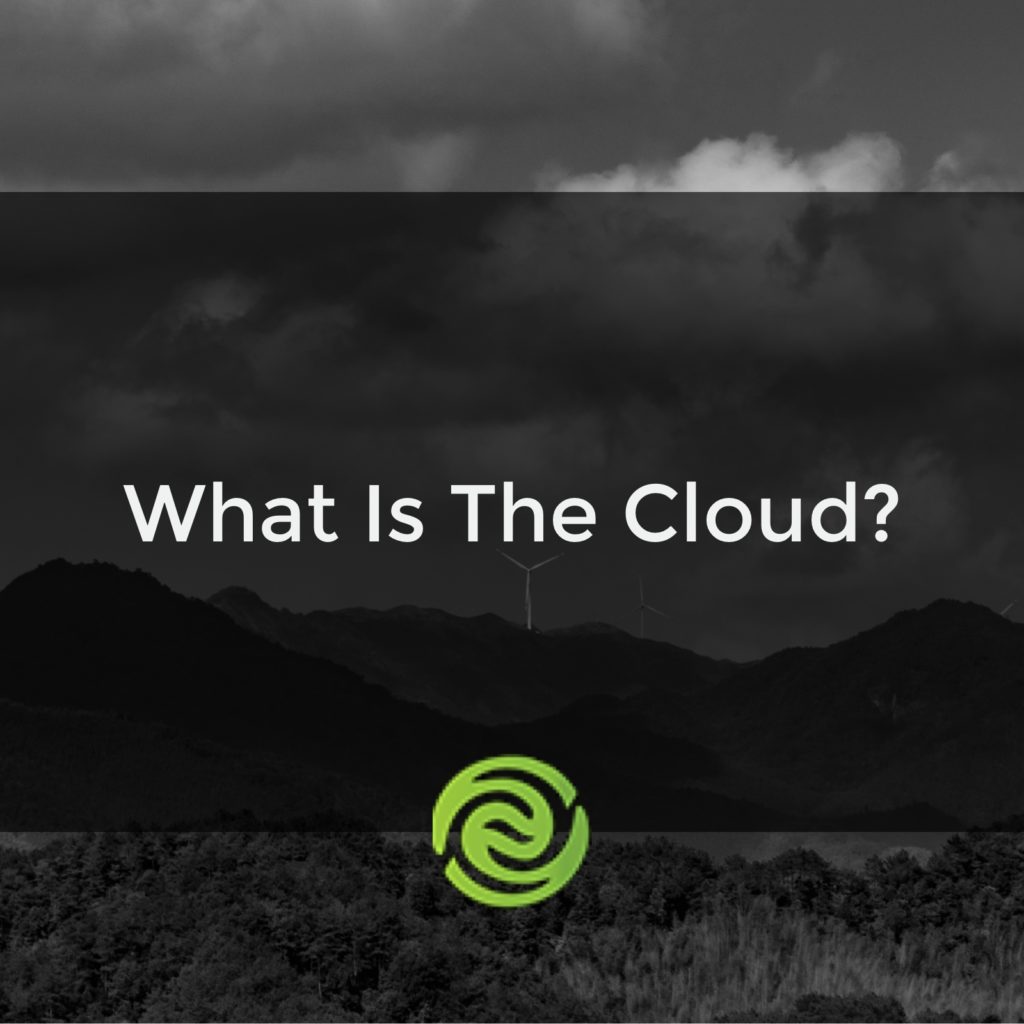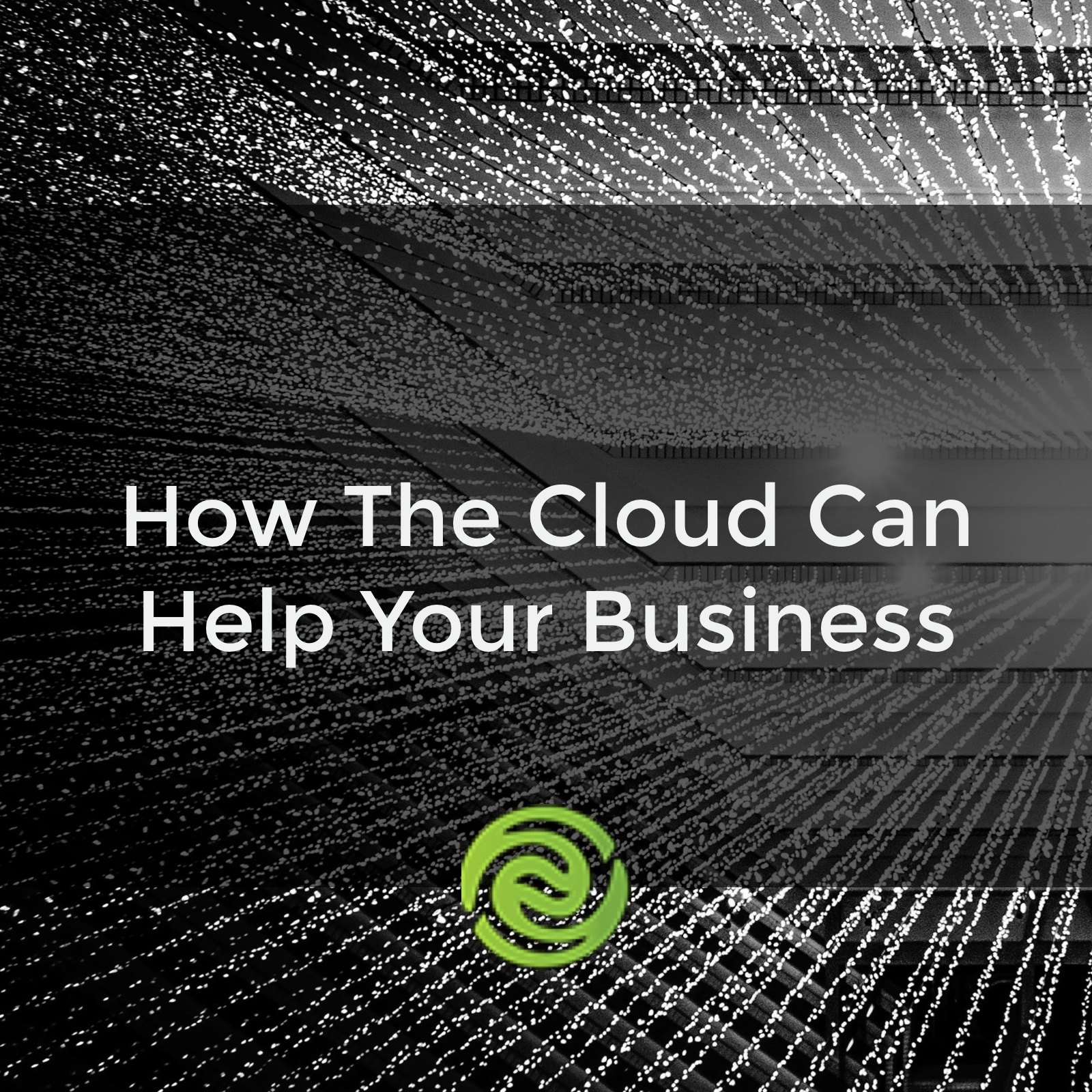You've heard about the Cloud, you may even have an idea of what it is…
What Is The Cloud?
 No one is quite sure where the term originated from, but the idea of “the Cloud” is something that we have been using a lot of for the past 20 years. Speculation suggests that it was coined in 1996 when then CEO of Google Eric Schmidt brought it up at a conference. Others claim that Compaq Computing first uttered the notion of cloud computing in 1996. Regardless of its origin, many people are still confused by the term, to this day but at the same time, they know they want to use it in some shape or form. I recently gave a presentation on The Cloud, which you can see here. I talked about how it can be broken down into several main points.
No one is quite sure where the term originated from, but the idea of “the Cloud” is something that we have been using a lot of for the past 20 years. Speculation suggests that it was coined in 1996 when then CEO of Google Eric Schmidt brought it up at a conference. Others claim that Compaq Computing first uttered the notion of cloud computing in 1996. Regardless of its origin, many people are still confused by the term, to this day but at the same time, they know they want to use it in some shape or form. I recently gave a presentation on The Cloud, which you can see here. I talked about how it can be broken down into several main points.
The Cloud is:
- The on-demand delivery of IT resources via the internet, typically on a pay per usage basis
- An economical alternative to managing your own servers, infrastructure, and platforms
- Infrastructure as a Service (IaaS)
- Platform as a Service (PaaS)
- Software as a Service (SaaS)
- Private, public, community, or a hybrid
To put things more simply: the Cloud is like life without the need of a physical hard drive. As computers have become faster and more powerful, and high speed internet has become more prevalent around the globe, it suddenly made more sense to store data and software online than relying solely on your computer. Distributing this data or work load across many powerful servers means web-based applications can run more reliably.
IaaS
IaaS is an entire network of servers, routers, switches, and firewalls… basically everything that makes up a network. IaaS providers host users’ network infrastructure and handle tasks such as system maintenance and backup.
PaaS
PaaS provides the ability for users to develop and manage web applications without needing their own infrastructure. A PaaS provider will host the hardware and software, freeing users from having to install anything.
SaaS
SaaS is what most people are familiar with. One of the most famous examples that many companies use is SalesForce, a software tool that helps manage customer relations. Salesforce is a great example because it is both a traditional website, and it’s also a software platform inside of the cloud.
A cloud can be private, public, community, or a hybrid, but what does that mean? Private clouds are typically setup by businesses or organizations for use by internal employees only, basically as a way to restrict the flow of data to those who should have access to it. A community cloud is one that is open to a specific group of users, and a public cloud is what we are all most familiar with – think services like Amazon and Google. Lastly, a hybrid cloud is a combination of a private cloud and a public cloud. With hybrid, a business will have some of their servers in a private cloud and the rest of their servers in a public cloud.
Who is the Cloud?
Some of the major, most well-known cloud service providers are:
- Amazon – AWS / Beanstalk / EC2 / S3
- Microsoft – Azure / SQL Database
- Google – Cloud Platform / Compute Engine / App Engine
- Apple – iCloud
- Datacenters – Contegix – MiraCloud, Rackspace
- Private Clouds – Fortune 500 / 1000
How do people use the Cloud?
Mobile device integration is the most popular use of the cloud. For example, consuming things like music, files, and apps. These can be applications like Spotify, which let you stream music, or Dropbox, which stores your files and lets you access them remotely. Speaking of storage, the Cloud can also be used for data backup. Another use is spinning up servers – when you need a server right away and don’t want to have to buy an actual server and plug everything in. There are also on-demand elastic servers, which provide different amounts of server capacity and let you adjust as needed. Finally, there are database services, where you get to use the licensing of a server all in one package
Where is my Data?
The simple answer — your data is all over the world, literally. Google, for example, has data centers in some of the most remote and unique locations in the world. One of them is in a plant in Finland, where they pump in sea water to keep all of the servers cool! Having data centers all of the world ensures redundancy for your software and your data.
Is my Data Safe?
Yes, though it is dependent on the configuration of your service, and the strength of your passwords. There’s a reason that most services these days suggest making passwords that are more difficult to decipher – it’s all for your safety, and to make sure hackers can’t easily get into your account.
Always be sure to read the fine print when it comes to signing up for a cloud service – there may be cases where you have to agree to terms and conditions that say that you no longer own your data.
What about a scenario in which you need to get your data back? While it is unlikely that a service like Amazon will ever just go away, one way to get your data back out of the cloud would be with a separate backup, created on a server outside of the seismic zone you are in. In the event of a disaster in St. Louis, your data would be recoverable if it was backed up somewhere like Chicago.
The Bottom Line…
The Cloud is here to stay, and knowing what it entails and how it works will help unlock the power it offers for us as businesses and as individuals.





